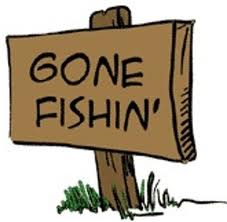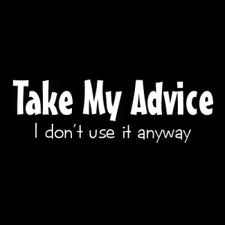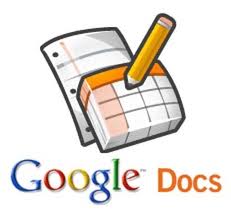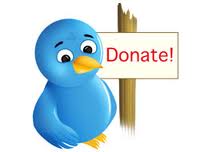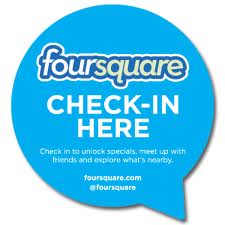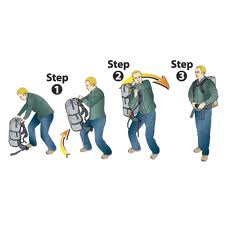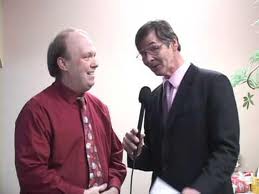 I trust that most of you are up-to-speed on the controversy swirling around Rush Limbaugh and his recent comments about feminism, contraception, and prostitution. If not, I encourage you to Google it because I won’t waste another inch of space talking about it here on this blog. However, I will spend a little time this morning talking about what every non-profit organization in America needs to walk away from this news story learning.
I trust that most of you are up-to-speed on the controversy swirling around Rush Limbaugh and his recent comments about feminism, contraception, and prostitution. If not, I encourage you to Google it because I won’t waste another inch of space talking about it here on this blog. However, I will spend a little time this morning talking about what every non-profit organization in America needs to walk away from this news story learning.
Last night I was watching some “opinion-based programming” on one of those alleged cable news stations. When the Rush Limbaugh story aired, I started looking for the remote control to change the channel, but I changed my mind when I saw a graphic showing all of the sponsors who recently pulled their support over this controversy and one of those sponsors was the Girl Scouts.
I must admit that my first reaction was “WTF” . . . why were the Girl Scouts paying Rush Limbaugh to air cookie commercials? My second reaction was “I need to re-think my support of this organization”.
 Your brand is important, and it represents something. In the case of the Girl Scouts, this is what their brand represents to me:
Your brand is important, and it represents something. In the case of the Girl Scouts, this is what their brand represents to me:
- empowering young girls to believe they can do anything they put their minds to doing,
- positive self-image and self-esteem,
- feminism,
- equality,
- non-discrimination.
In my community, the Girls Scouts were one of the first youth development agencies to develop a nondiscrimination policy banning discrimination against kids and adult leaders based on their sexual orientation. Nationally, the Girls Scouts took the word “God” out of their pledge and made it optional for kids to say because they didn’t want to discriminate against girls who didn’t believe in God.
 It was these issues that helped me form the aforementioned conclusions about the Girl Scout brand.
It was these issues that helped me form the aforementioned conclusions about the Girl Scout brand.
In a matter of just a few minutes last night, one news story called everything I believed about them into question.
The lessons that every non-profit organization needs to take away from this example is:
- Your brand is important and it defines you.
- Each of your donors holds a mental image of what you stand for in their mind.
- When a donor sees something that doesn’t match up with their image of you, it can have devastating effects.
- Everything you do provides an opportunity for the community and your donors to see your brand at work.
In the case fo the Girl Scouts, they made a mistake. They purchased radio ads and didn’t realize that some of their ads would air during “opinion-based programming” like The Rush Limbaugh Show. Ooooops!
However, your brand is also at risk every time you take your clients out in public. I once talked to a donor who saw his favorite charity at a Chicago Cubs game. As you can imagine, some of that non-profit’s clients were misbehaving and the donor openly questioned whether or not his contribution was having any impact.
 Your brand is also at risk if your facilities or vehicles are poorly maintained. Both of these things are a direct reflection on who you are and what you stand for. Driving clients around town in a van or bus that doesn’t look safe tells donors that you either don’t value safety or don’t allocate their contributions wisely.
Your brand is also at risk if your facilities or vehicles are poorly maintained. Both of these things are a direct reflection on who you are and what you stand for. Driving clients around town in a van or bus that doesn’t look safe tells donors that you either don’t value safety or don’t allocate their contributions wisely.
We all make mistakes, and the Girl Scout council in Portland, Oregon made a mistake that landed their national brand in a national news story. It can happen to you, and it can happen even if you are very careful. The best suggestion I have to offer is to make sure your agency operates with a written crisis management plan. If you are looking for a good resource to guide your efforts, the Colorado Nonprofit Association offers a nice white paper and template that you can access by clicking here.
Has your agency ever found itself in a similar situation as the Girl Scouts? If so, how did you handle it? Do you have a crisis management plan in place? If so, what does it look like and how often does the board of directors review it? Please use the comment box below to share your experiences and thoughts.
Here’s to your health!
Erik Anderson
Founder & President, The Healthy Non-Profit LLC
www.thehealthynonprofit.com
erik@thehealthynonprofit.com
http://twitter.com/#!/eanderson847
http://www.facebook.com/eanderson847
http://www.linkedin.com/in/erikanderson847

